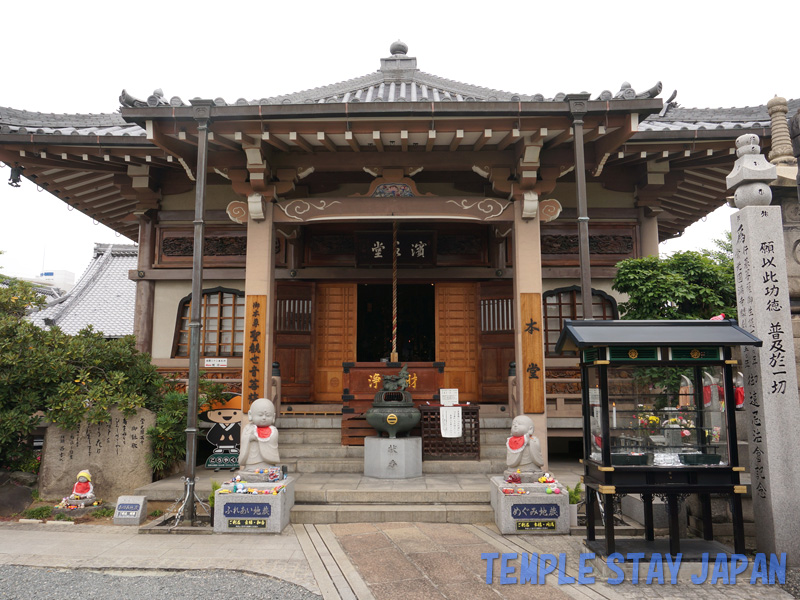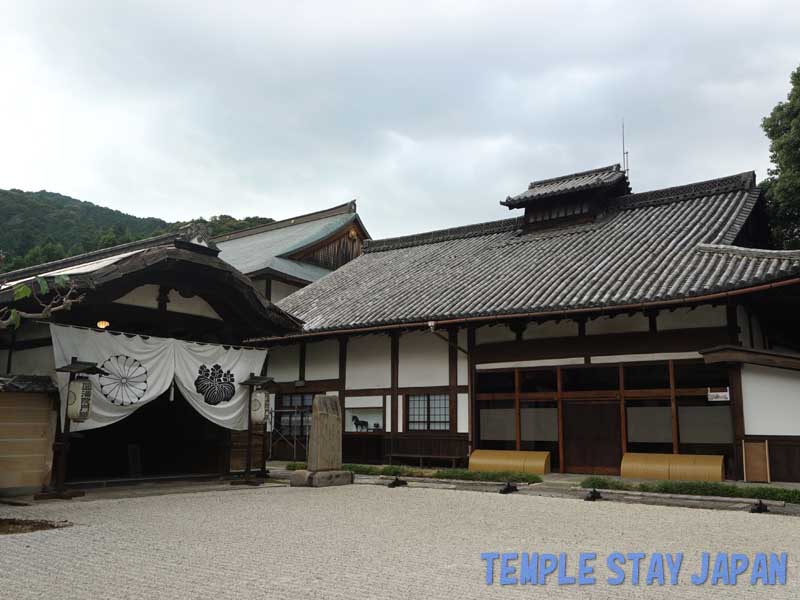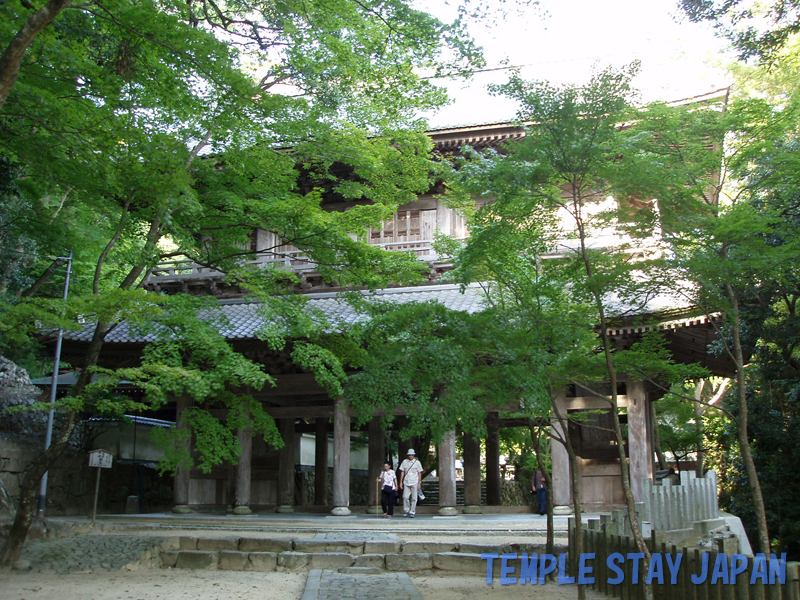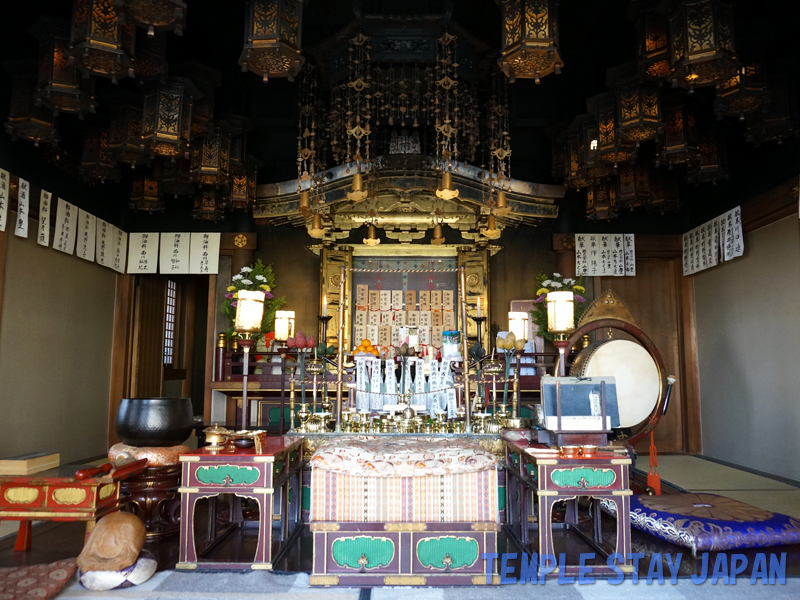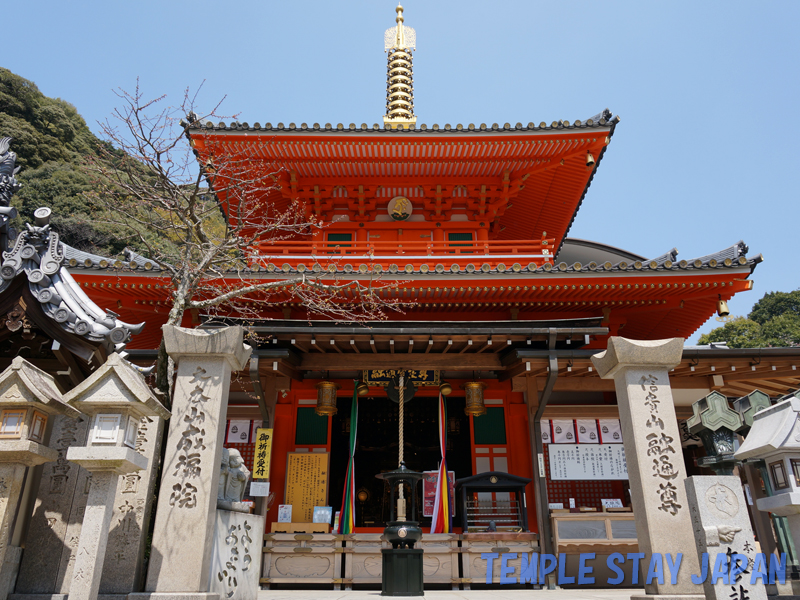stay– category –
-

Jyokoenmanji temple stay (Osaka)
Located near Suita Station, this shukubo enjoys very good access to transportation. It is highly recommended for people who are making training camp or group trips to Osaka. Although the rooms are not equipped with TV sets, they are large and comfortable. -

Shipporyuji Hakuunkaku temple stay (Osaka)
Hakuunkaku is a shukubo located in Shipporyu-ji temple of Mount Inunaki, a sacred place of Shugendo. In the Shipporyu-ji temple, they hold various ascetic training events and general people can participate. The takigyo (Waterfall Training) is held on the second Sunday every month. -

Katsuouji Outyokaku temple stay (Osaka)
This is an old temple founded in 727. This temple is famous as a temple for luck in battle. This shukubo is utilized by many people as lodging where they can reflect upon themselves and purify the mind in quietness away from urban hustle and bustle. -

EnmaninMonzeki-Sanmitsuden temple stay (Shiga)
This is one of the seventeen monzeki temples in Japan. A monzeki temple means a high-class temple that has been succeeded by loyal family members for generations. The shukubo is used by various people, from people traveling alone to students on school trips or for training camps by sports clubs. -

Eigenji Kaikan temple stay (Shiga)
This is the head temple of the Eigen-ji school of the Rinzai sect. It is an old temple built in 1361. Eigen-ji temple is also deeply related to devil's tongue. The shojin vegetarian cuisine they serve at the shukubo is also full of devil's tongue jelly. -

Ohmijingu OhmiKangakukan shrine stay (Shiga)
This is an accommodation facility located in the forest in the precinct of Ohmijingu shrine. As the first shrine with a clock in Japan. This shukubo does not offer religious experiences for guests, but you can freely participate in the various festivals and religious events. -

Housenji ZEN Center temple stay (Kyoto)
This temple offers full-fledged zen ascetic training experiences. Training of various periods from one night training on Saturday and Sunday to the short training program for three nights four days, as well as the long term training programs of 1 month or longer, are available at request. -

Shigisan Gyokuzoin temple stay (Nara)
I took a taxi cab from Oji Station. It took about 15 minutes to the parking place below Gyokuzo-in. It was a clean and modern facility and the shukubo staff welcomed me politely. The morning religious service starts from 3:00 in the Yokuyu-do followed by the Goma prayer from a little past five in the morning. -

Shigisan Jyohukuin temple stay (Nara)
Shigisan Chogosonshi-ji temple is an old temple, which is said to have been founded by Prince Shotoku (574 to 622). Jyohuku-in is located in the precinct mountain. You are free to participate in the services. They serve quasi-shojin cuisine in a kaiseki course style. -

The 61th stage of Pilgrimage, Kouonji temple stay (Ehime)
It offered all the facilities you would expect. Although I was traveling alone, they let me use a large room. The evening service began from 19:00 after dinner. The next morning, I went to worship the principle image in the main hall, which was open from 6:00 in the morning and we were free to get enter.

